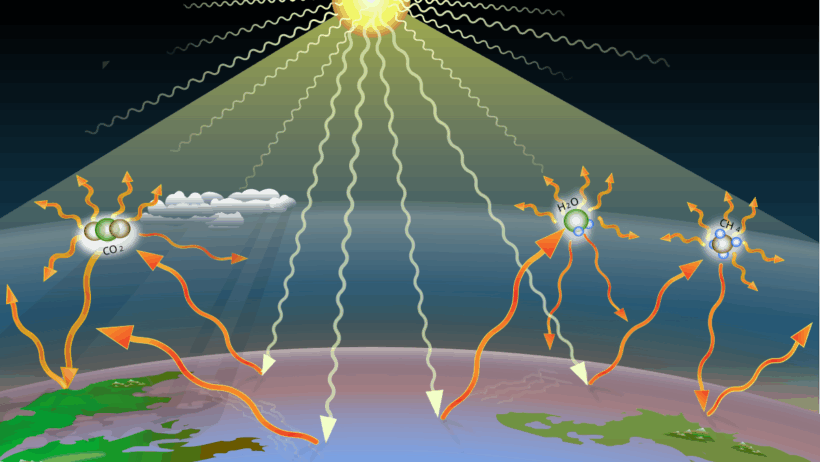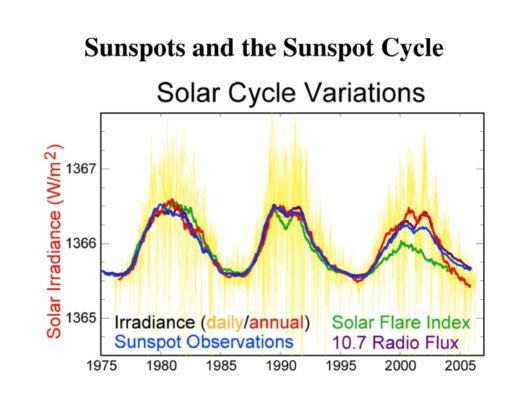In the intricate tapestry of Earth’s atmospheric composition, greenhouse gases play a pivotal role in regulating the planet’s temperature. But what exactly are these gases, and how do they contribute to the phenomenon known as the greenhouse effect? This article will unravel the complexities surrounding greenhouse gases, elucidate their mechanisms, and highlight their implications for our planet’s climate.
Understanding Greenhouse Gases
Greenhouse gases (GHGs) are specific atmospheric components that have the ability to trap heat emitted from the Earth’s surface. The primary GHGs include carbon dioxide (CO₂), methane (CH₄), nitrous oxide (N₂O), and water vapor. Each of these gases possesses unique properties that contribute to their heat-trapping capabilities, ultimately influencing temperature regulation.
Carbon dioxide, primarily released through combustion of fossil fuels, deforestation, and various industrial processes, is perhaps the most recognized GHG. Methane, though present in smaller quantities, is significantly more effective at heat retention, possessing over twenty times the heat-trapping potential of CO₂ over a 100-year period. Nitrous oxide, often emitted from agricultural practices and industrial activities, also has a much higher global warming potential than CO₂. Lastly, water vapor, although it acts as a feedback mechanism rather than a direct byproduct of human activities, is the most abundant greenhouse gas and crucial in enhancing the greenhouse effect.
The Greenhouse Effect Unveiled
At its core, the greenhouse effect operates through the absorption and re-radiation of infrared radiation. Solar radiation, predominantly in the form of visible light, permeates the Earth’s atmosphere. Upon reaching the surface, some of this energy is absorbed and re-emitted as infrared radiation. Herein lies the crux of the greenhouse phenomenon.
Greenhouse gases effectively intercept and absorb this infrared radiation, preventing it from escaping back into space. Instead, these gases re-radiate the heat in all directions, including back towards the Earth’s surface, resulting in a warming effect. This natural process is vital for maintaining a habitable climate; without it, our planet would plunge into inhospitable temperatures, rendering life as we know it impossible.
Types of Greenhouse Gases and Their Sources
To appreciate the multifaceted role of greenhouse gases, it is critical to examine their distinct sources and contributions to the global atmosphere.
- Carbon Dioxide (CO₂): The primary source of CO₂ emissions stems from the burning of fossil fuels for energy, such as coal, oil, and natural gas. Deforestation exacerbates the situation, as trees that would typically absorb CO₂ are removed from the ecosystem. Additionally, certain industrial processes, such as cement production, contribute significantly to atmospheric CO₂ levels.
- Methane (CH₄): Methane emissions arise from various sources, including agriculture (notably enteric fermentation in livestock), landfills, and natural gas production. Its potency in trapping heat makes it a focus of mitigation efforts, primarily directed at reducing emissions from agriculture and organic waste management.
- Nitrous Oxide (N₂O): Commonly associated with agricultural activity, nitrous oxide is released when nitrogen-based fertilizers are applied. This gas also emanates from chemical production processes and various waste management practices.
- Water Vapor: Unlike other greenhouse gases, water vapor is not directly emitted through human activity. Instead, it is influenced by temperature changes. As the Earth warms due to elevated levels of other greenhouse gases, more water vapor enters the atmosphere, further intensifying the greenhouse effect.
The Impact of Greenhouse Gases on Climate
The ramifications of increased greenhouse gas concentrations have far-reaching consequences for Earth’s climate systems. As global temperatures rise, weather patterns are disrupted, leading to a cascade of environmental changes. Increased frequency and intensity of extreme weather events—hurricanes, droughts, and heatwaves—can be directly linked to alterations in atmospheric composition.
Moreover, the greenhouse effect contributes to the alarming phenomenon of polar ice melt, which directly influences sea levels. As glaciers and ice sheets recede, coastal communities face heightened risks of inundation, thereby prompting discussions surrounding climate adaptation and resilience.
Mitigation and the Road Ahead
Efforts to mitigate the impacts of greenhouse gases center around reducing emissions and enhancing carbon sequestration. Transitioning to renewable energy sources, promoting energy efficiency, and fostering sustainable agricultural practices are paramount strategies in curbing GHG emissions. Additionally, reforestation and afforestation initiatives serve to enhance the planet’s capacity to absorb CO₂ from the atmosphere, thereby contributing positively to the carbon cycle.
Public awareness and policy development are crucial in driving these initiatives forward. Education facilitates informed decision-making, fostering a culture of sustainability. Collaborative global action, such as the Paris Agreement, seeks to unite countries in their efforts to limit temperature rise below 2 degrees Celsius, aiming for a more comprehensive international approach to climate change.
Conclusion
Greenhouse gases undoubtedly shape Earth’s climate system, and understanding their mechanics is vital for fostering a resilient future. The perpetual interplay between human activity and atmospheric composition underlines the urgency for concerted efforts toward sustainability. By demystifying greenhouse gases and addressing their impact, we pave the way for informed action, ensuring a balanced coexistence with our planet’s intricate ecosystems.




